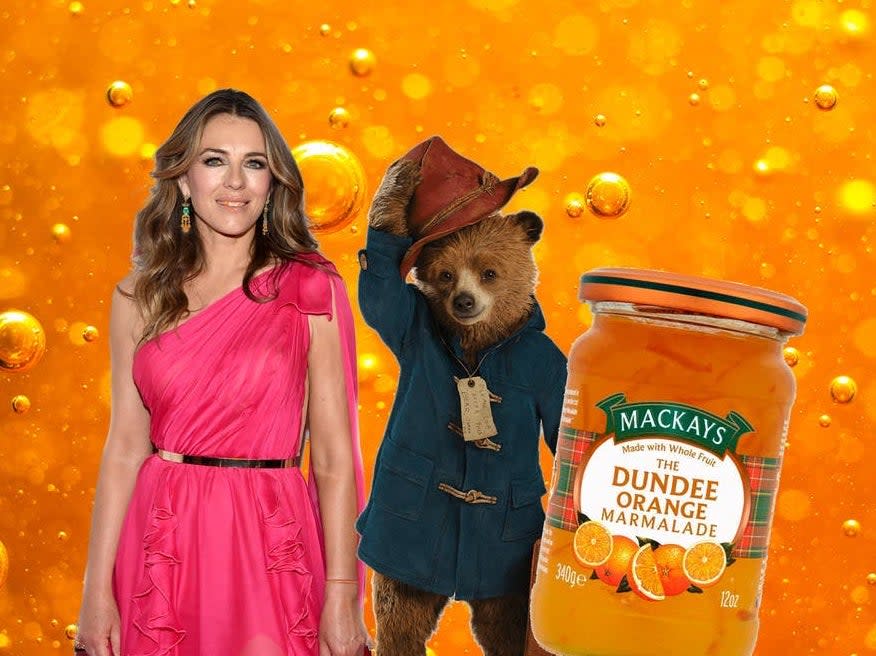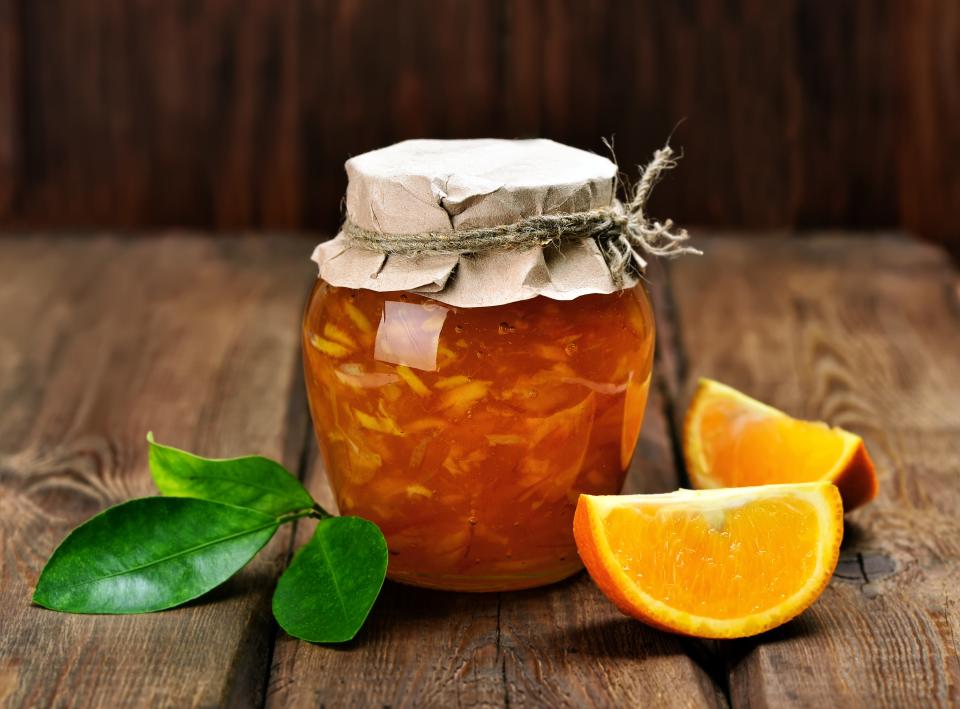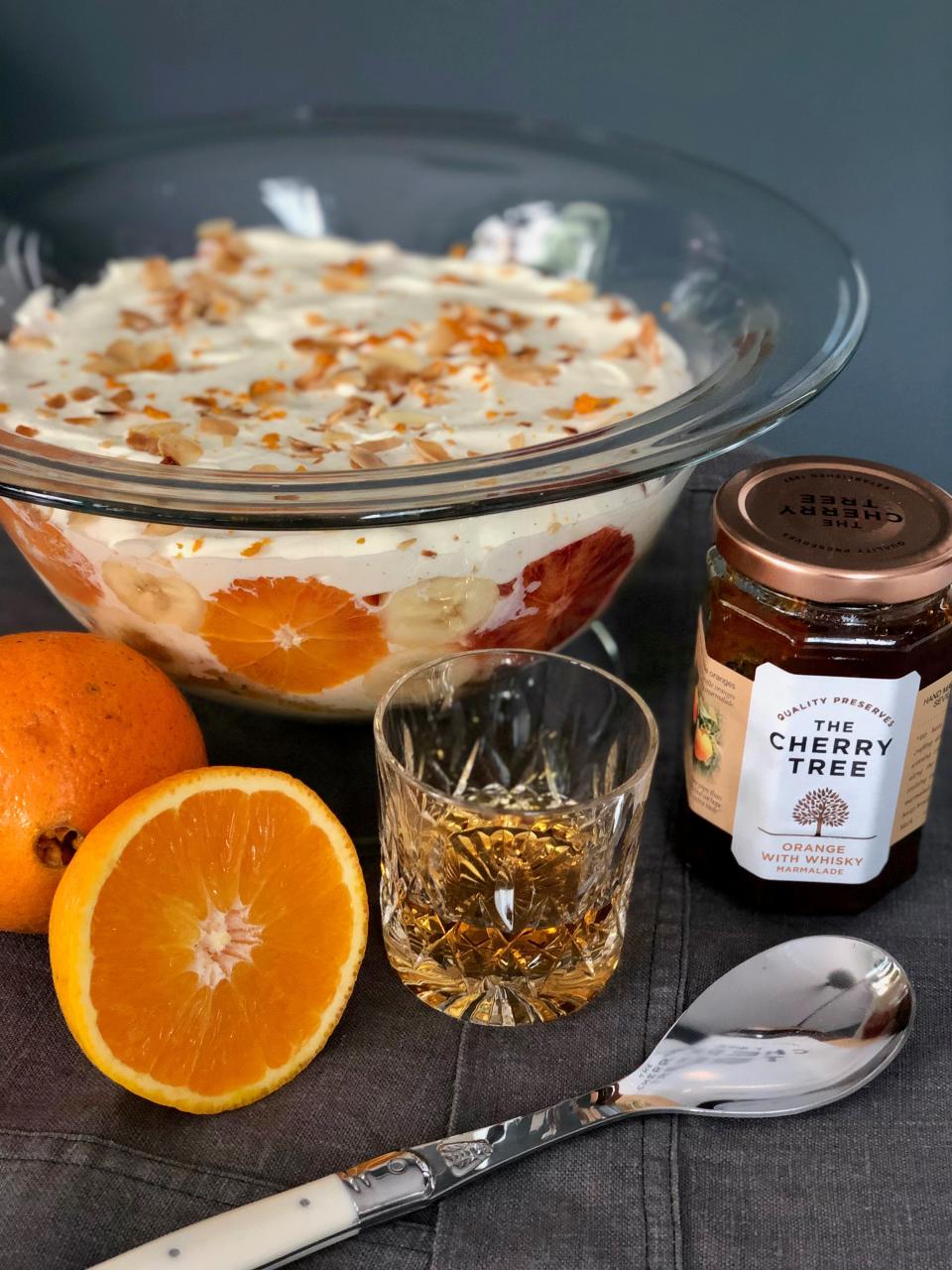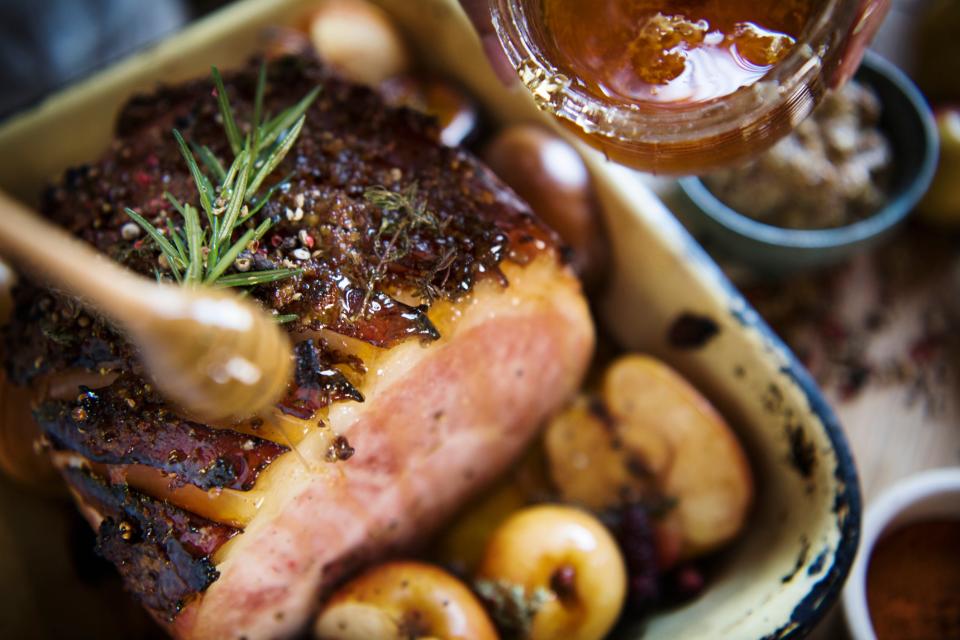From Paddington Bear to Liz Hurley, we’re all marmalade fans now – here’s how to make your own

If it’s good enough for Paddington Bear (and Liz Hurley) then it’s good enough for us
(Getty/Independent)- Oops!Something went wrong.Please try again later.
Another lockdown, another food item to obsess over for three weeks before later abandoning. We’ve already had sourdough starters and banana bread, but for the third lockdown the nation has collectively turned to making marmalade. If it was good enough for Paddington Bear (the 2014 film actually caused a brief spike in English marmalade sales) then it’s good enough for another working from home lunch. Although maybe don’t store sandwiches in your hat.
Marmalade in Britain is not new – it dates back to at least the Tudor period, when Henry VIII was gifted some, albeit in a quince format rather than oranges – and there are reports the Queen enjoys it on the Buckingham Palace breakfast table. But today the citrus preserve is more Insta-cool than historical, as celebrities line up their Seville oranges to take part.
Over Christmas Liz Hurley had a go. On social media she described herself as a “demented housewife” after producing 47 jars of marmalade for her larder, with a view to making more (she didn’t divulge where she bulk purchased quite so many oranges though). Others have been less successful: TV host and food lover, Laura Jackson, shared a somewhat failed attempt. And Little Women actor Florence Pugh even shared a marmalade tutorial.
Unlike banana bread and sourdough, marmalade brings a slightly different non-carbohydrate kitchen challenge, but during a period when all we have is time on our hands, there is something appealing about learning a new skill.
And you’ve picked the perfect time as not only are we right in the middle of marmalade season, but the ingredients are packed with vitamin C (perfect to keep winter colds at bay), and you can eat it when taking part in Veganuary.
Fancy giving it a go? Gavin Brooking, founder of The Cherry Tree (and guru behind their bestselling orange and whisky marmalade), has shared five tips from his 30 years of marmalade making with The Independent.
Use fresh Seville oranges. “Their sourness and robustness make for a much better creating experience and finished product, much more so than typical eating oranges."
Consider the peel size. “How hardcore do you want it? How thickly and in what shape you cut your orange peel determines this. It’s all personal preference and aimed towards what you want to use your marmalade for, as it affects the taste, density and the mouthfeel. Start with a batch of finely shredded peel, perhaps using a cheese-grater, then work your way to something so thick that you can barely get it out of the jar. Just remember a thick peel will need a good few hours cooking! Have some fun with it.”
Mix up your sugar. “White granulated sugar has had all the molasses refined out of it, but you may fancy something with a bit more depth to it. In our vintage thick-cut marmalade we use a mixture of white sugar and soft dark brown sugar. There are tons of different sugars out there and you can try blends too: for example, 75 per cent white and 25 per cent dark, experiment and find your balance. What’s amazing for baking may not be as perfect for toast, so make a few different batches and enjoy some tasting of different pairings.”
Consider taking it to the next level. “We add ginger and whisky to some of our award-winners and have even used pink grapefruit in the past. If you love something and think it can complement the flavour, then lob some in at the final boiling stage, so as much of the flavour is retained as possible. Be bold."
Marmalade is for life, not just for toast! “Its possibilities are endless; baking, savoury glazes and stirred into sauces. It caramelises beautifully. My personal favourite is marmalade-glazed carrots on my roast dinner, just have some fun with them. They last for ages, too.
Feeling inspired? Here are three recipes to sink your teeth into. From a twist on the classic recipe, to marmalade trifle and glazed ham.
Whisky marmalade

This boozy twist on the British staple is sure to spice up your morning toast.
1.3kg Seville oranges
2 lemons, juice only
2l of water
2.5kg preserving or granulated sugar
2 tbsps of whisky
Butter
Firstly, lightly butter the base of the saucepan to help prevent the marmalade catching, then place the lemon juice and the whole oranges in the pan and cover with the water.
Bring to the boil, cover and simmer gently for two hours until the peel can be easily pierced with a fork and the mixture has reduced by at least half. Meanwhile, warm the sugar in a very low oven.
Pour off the cooking water from the oranges into a jug and tip the oranges into a bowl, then return the cooking liquid to the pan.
Allow the oranges to cool, then cut in half, scoop out all the pips and pith, and add to the reserved orange liquid in the pan.
Bring to the boil for five minutes, then strain this liquid through a sieve into a bowl and press the pulp through with a spoon - it is high in pectin so gives marmalade a good set. Pour half of the remaining liquid into a preserving pan.
Using a sharp knife cut the orange peel into fine shreds. Add half the peel to the liquid in the preserving pan, along with the warm sugar. Stir over a low heat until all the sugar has dissolved – about 10-12 minutes – then add the whisky and bring to the boil for 20 minutes until setting point is reached.
Remove the pan from the heat and skim any scum from the surface, before leaving the marmalade to stand in the pan for 20 minutes to cool.
Pot into sterilised jars and store in a cool, dry, dark place.
Marmalade trifle

If you’ve conquered the art of marmalade-making, then it’s also useful for a variety of desserts, from cakes to tarts to this show-stopping trifle.
5 trifle sponges, sliced in half lengthwise
3 tbsp (80g) Cherry Tree Preserves Whisky Marmalade
4 tbsp whisky
4 blood oranges
2 bananas
500g vanilla custard
1 tsp vanilla extract
2 tbsp icing sugar
300ml double or whipping cream
2 tbsp flaked almonds, toasted
Spread the marmalade over five slices of the trifle sponges, then top with the second slices to create five sandwiches. Cut each sandwich into three and place in the base of a large glass bowl. Spoon over the whisky.
Remove the zest from one orange and juice. Pour the juice over the trifle sponge.
Slice off the skin and white pith from the other two oranges, and cut into 0.5cm slices. Slice up the bananas. Arrange both on top of the sponges.
Add two-thirds of the orange zest to the custard, mix, then spoon over the oranges.
Sift the icing sugar into the cream, add the vanilla extract and lightly whip, creating soft folds. Spoon the mixture over the custard, cover and leave to chill.
When ready to serve, sprinkle over the toasted almonds and the remaining orange zest.
Marmalade glazed ham

Marmalade is more versatile than many realise, and can be used in a variety of savoury dishes too. Who says glazed ham is just for Christmas?
1 raw gammon ham, smoked or unsmoked (approx 5-6kg)
1 jar Cherry Tree Seville Orange Marmalade
300g light muscovado sugar
1 jar whole cloves
550ml water
Heat oven to 180C/160C fan/gas 6 and then place the ham into a large roasting tin before tipping in 500ml water.
Cover the whole thing loosely with greaseproof paper, then cover with a large sheet of foil and then baking paper, making sure to seal around the edge of the tin. Put it in the oven, then turn the heat down to 160C/140C fan/gas 3 and leave to cook for five hours.
Meanwhile, mix the marmalade with the sugar and 50ml water in a small pan, bring to the boil, then set aside and leave to cool.
Remove the ham from the oven and undress to cool for ten minutes. Then remove the rind by gently prising the skin from the fat and lifting it away. Try to keep as much fat on the leg as you can as this will keep the ham moist as it roasts.
Drain off most of the liquid, leaving just a little in the tin and then the oven up to 200C/180C fan/gas 6. Score lines into the fat with a knife to make large diamond shapes, with the lines about 4cm apart.
Brush a third of the marmalade glaze over the joint, really pushing it into the creases and cuts. Now stud the ham with the cloves by poking a clove into the corner of each diamond.
Put a trivet into the roasting tin, then set the ham on top. Roast the ham, uncovered, for 45-50 mins, brushing with the remaining glaze a few times during cooking, until caramelised and delicious. Carve hot or cold.

